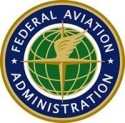Questions Timing, Costs For Student Pilots
 The National Association of Flight Instructors (NAFI) has
submitted response to the FAA's recent NPRM proposing the inclusion
of a photo on every pilot certificate.
The National Association of Flight Instructors (NAFI) has
submitted response to the FAA's recent NPRM proposing the inclusion
of a photo on every pilot certificate.
The Intelligence Reform and Terrorism Prevention Act (IRTPA) of
2004 requires the FAA to issue improved pilot licenses that include
photographs along with other requirements. While NAFI supports the
FAA's efforts to comply with this act, NAFI believes the NPRM
raised points with regard to logistics, requirements, and potential
effects on flight training in the United States.
Advocating on behalf of NAFI's membership within the
flight-training industry, Executive Director Jason Blair
spearheaded a nearly two-month initiative by a committee of members
to carefully analyze the contents of the NPRM and its possible
effects on flight training. In its submission, NAFI noted that
there are potential inconsistencies between the proposed rule
changes and the law that Congress passed. Blair noted concern about
the expedited nature of this NPRM due in part to Congressional
pressure [on the FAA]. "The possible effects on student pilots and
flight training cannot be overlooked," he said.
One example includes a six- to eight-week delay between
application and issuance of the photo certificate, which could
unnecessarily prolong the time between when a student starts
training and first solos, the first time they'd need that
certificate. Currently, the cost-to-pilots estimates are inaccurate
due to some regulatory flexibility allowed to the FAA, but NAFI
objects to the need for pilots to re-apply every time they are
issued a new certificate.
 NAFI noted concern that the proposal could also require pilots
to incur significant costs for certificates when they obtained
multiple certificates in rapid succession during concentrated
flight training. The association proposed that one possible
solution would be to issue one "pilot identification certificate"
that would be issued periodically (such as every eight years) and
that would be accompanied by a traditional certificate that
provides a pilot's limitations and privileges.
NAFI noted concern that the proposal could also require pilots
to incur significant costs for certificates when they obtained
multiple certificates in rapid succession during concentrated
flight training. The association proposed that one possible
solution would be to issue one "pilot identification certificate"
that would be issued periodically (such as every eight years) and
that would be accompanied by a traditional certificate that
provides a pilot's limitations and privileges.
The NPRM was ambiguous as to whether the proposed changes would
apply to flight instructor certificates. NAFI advocated that CFI
certificates be excluded from the photo requirement. Since a CFI
certificate is only valid when accompanied by an appropriate pilot
certificate, inclusion of a photograph on a CFI certificate would
represent a duplicative requirement with no additional security
benefit. Additionally, the CFI certificate currently requires
renewal every two years, and adding a photo requirement would
represent an increased and unnecessary burden and cost to the CFI
community.
The impetus for the NPRM was the reaction of Rep. John Mica
(R-FL) to non-compliance by the FAA with laws passed in 2004 that
gave the FAA a one-year deadline to implement the use of pilot
licenses with photo identification and biometric identifiers, such
as fingerprint data. Those laws, known as the "Intelligence Reform
and Terrorism Prevention Act" specifically outline the requirements
and deadlines for the new certificates. Specifically, according to
the rule, the licenses need to be tamper resistant, include a photo
of the airman, and have the ability to accommodate biometrics.
Shortly after issuing a memo to the heads of the FAA, TSA, and
Homeland Security, the FAA responded with this NPRM.
 Aero-FAQ: Dave Juwel's Aviation Marketing Stories -- ITBOA BNITBOB
Aero-FAQ: Dave Juwel's Aviation Marketing Stories -- ITBOA BNITBOB NTSB Prelim: Rutan Long-EZ
NTSB Prelim: Rutan Long-EZ ANN's Daily Aero-Term (12.05.25): Hazardous Weather Information
ANN's Daily Aero-Term (12.05.25): Hazardous Weather Information Aero-News: Quote of the Day (12.05.25)
Aero-News: Quote of the Day (12.05.25) Airborne-Flight Training 12.04.25: Ldg Fee Danger, Av Mental Health, PC-7 MKX
Airborne-Flight Training 12.04.25: Ldg Fee Danger, Av Mental Health, PC-7 MKX




